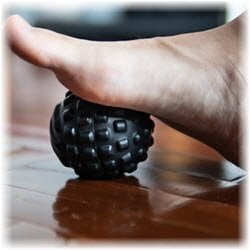Plantar Fasciitis
 Foot Anatomy
Foot Anatomy
The foot is one of the most complex parts of the body. It is made up of 26 bones, connected by many joints, muscles, tendons and ligaments. The foot is at risk to many stresses and when triggered can cause pain, inflammation or injury. These problems may result in limited movement and mobility.
Plantar Fasciitis
“Plantar fasciitis is one of the most common injuries we see when dealing with the foot. Most patients feel pain in the heel of the foot, especially when standing up after resting,” says Byron S. Alberty DPM, PIH Health podiatrist. “The condition is caused by overuse or injury to the sole surface (plantar) of the foot. This causes inflammation to the fascia, a tough, fibrous band of tissue that connects the heel bone to the base of the toes,” he says.
Both men and women of all ages, including kids, can get plantar fasciitis. The condition is mostly found in people with jobs that require a lot of walking or standing on hard surfaces, people with flat feet and people with high arches. Walking or running, especially with tight calf muscles, may cause the condition. Wearing shoes with little arch support and soft soles can also result in developing plantar fasciitis.
Treatment
Home remedies often work best to treat minor cases of plantar fasciitis. Treatment may include:
- Rest - Stay off your feet to help minimize irritation to the damaged area
- Ice - To reduce swelling, apply ice for 15 to 20 minutes, three to four times per day
- Medication - Nonsteroidal anti-inflammatory medicines (NSAIDs), such as ibuprofen may help soothe pain
- Stretch - Stretching exercises can provide elasticity to the Achilles tendons and plantar fascia, helping to relieve pain
Talk to a PIH Health podiatrist if you are experiencing pain or discomfort in your foot. Visit PIHHealth.org/Find-A-Doctor and search “podiatry” under the specialties tab.
Copyright © 2021 The StayWell Company, LLC. except where otherwise noted.